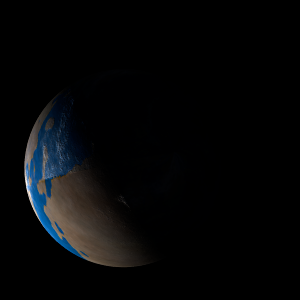|
|
Space Astro
|
Info for exoplanet "Bemipso"
| Scientific (actual) data |
|---|
| Name | HD 216520 c |
| Planet status | Confirmed |
| Mass sini | 0.0297 |
| Orbital period | 154.43 |
| Semi major axis | 0.528 |
| Orbit eccentricity | 0.12 |
| Discovered | 2020 |
| Updated | 2021-06-27 |
| Omega | 198.12 |
| K | 1.29 |
| Publication | Published in a refereed paper |
| Detection type | Radial Velocity |
| Mass measurement type | Radial Velocity |
| Alternate names | 2MASS J22473183+8341493 c, BD+82 704 c, HIP 112527 c, LSPM J2247+8341 c, SAO 3796 c, TIC 264899051 c, TYC 4650-00917-1 c, WISE J224731.02+834150.7 c |
| Star name | HD 216520 |
| Right ascension | 341.88° |
| Declination | 83.7° |
| Mag j | 5.951 |
| Mag h | 5.524 |
| Star distance | 19.56 |
| Star metallicity | -0.16 |
| Star mass | 0.82 |
| Star radius | 0.76 |
| Star sp type | K0 V |
| Star age | 6 |
| Star temperature | 5103 |
| Star alternate names | 2MASS J22473183+8341493, BD+82 704, HIP 112527, LSPM J2247+8341, SAO 3796, TIC 264899051, TYC 4650-00917-1, WISE J224731.02+834150.7 |
| Wikipedia article | HD 216520 c |
Back
| |
| Fictional info (?) |
|---|
| Suggested name | Bemipso |
| Planet type | Cold planet |
| The planet telescopically displays the complete range of phases, similar to Venus and the Moon, as it moves in its inner orbit relative to HD 216520, which reoccurs over the so-called synodic period approximately every 104 days.
.
The smooth Borealis basin in the northern hemisphere covers 10 percent of the planet and may be a giant impact feature.
A prominent result is the "great green spot", a giant storm that is known to have existed for centuries since it was first detected by scanner. |
| Estimated population | 110000000 |
| Atmosphere | Water | 78% |
| Methane | 20% |
| Oxygen | 2.2% |
| Carbon dioxide | 8.3E-5% |
| Atmospheric pressure | 0.16 bar |
 |
| No known satellites |
| Google search for Bemipso |
|
Website by Joachim Michaelis
|
|
|
|